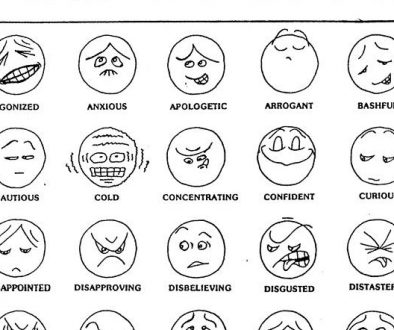Infinite Possibility and Unimpeded Hope: NVC in Practice by Aubree Moon
Studying Nonviolent Communication in this dynamic blend of internship and academic study has deepened my understanding and proficiency with communication and self-awareness. The element of being a part of a community that values and actively practices NVC was incredibly stimulating. The multiple practice groups every week offered a dynamic level to my learning, and I also was able to spend a lot of time with NVC facilitators as I worked with NVC NextGeneration. The community element of my program provided the opportunity to absorb knowledge through conversation and collaboration. I also was able to spend time teaching to both educators and students, and through that process my understanding of these skills became much more ingrained in my own understanding. Creating lessons and explaining NVC and mediation in my own words allowed me to engage creativity with these ideas and think of them in new ways.
For instance, during a Peer Mediation Training for 7th graders, I could tell that they were struggling with the concept of “needs” relating to NVC and this lack of understanding was causing them to disengage from being active in the learning process. On the spot, I created an activity for them to understand the material in a way that also allowed them to physically move their bodies and get focused attention. I wrote “I am feeling ____ because my need for ____ wasn’t being met” on the whiteboard, shared a personal example and asked them to each come to the front of the room and share their own experience. One by one, the students came up and shared a story of interpersonal conflict. With some guidance, they stated the emotion they felt and what the underlying unmet need or needs were. They wrote the emotions and the needs on the board, deepened their understanding and became reengaged with the learning. This experience of observing the quality of learning taking place and stepping in to adjust it to better meet everyone’s needs was incredibly empowering and confidence building. I received great feedback from my fellow facilitators, and I directly saw the positive impact I made on the learning process.
I spent the majority of this quarter focusing on and developing a better understanding of the NVC mediation process. Aside from teaching regularly at local middle schools, I attended a weekly Mediation Dojo where I observed and practiced mediation. This focused learning on NVC mediation was very eye-opening into the world of conflict and understanding. I began to see much deeper into my own issues around interpersonal conflict and how there are so many roadblocks to truly understanding someone else, especially in conflict. In the Mediation Dojos, the mediations followed a simple format of going back and forth between the disputants collecting information. The mediator focused on each person one at a time, developing a sense of trust with them through employing curiosity and empathy. The goal of the mediator was to understand how they were feeling and identify the corresponding unmet need.
Mediator (turning to Disputant A): “And how are you doing?”
Disputant A: “Well, I’m angry. I hear her (Disputant B) saying that she didn’t mean to forget about our plans, but it still affects me. I showed up, I wasted my time waiting. And I feel like she doesn’t even care.”
Mediator: “I hear you that you are feeling angry. Are consideration and empathy important to you?”
Disputant A: “Yeah. Totally.”
After finding the need, the mediator then asks the other person to reflect that those qualities are important to them. This would look like:
Mediator: “Disputant B, are you willing to reflect that consideration and empathy are important to Disputant A?”
Disputant B: “Consideration and empathy are important to Disputant A.”
This seems like such a simple process, yet I watched it transform real emotions in a matter of minutes. As I participated weekly in various roles of mediator, role-playing as a disputant or just observing, I began to notice the transformational power of having the disputants repeat what is important to the other. In the last Mediation Dojo I attended, we were working with the conflict between a couple, where A wasn’t feeling accepted by B. After listening to that person speak, the mediator distilled the needs from what A said, in the disputant’s own words, and carried it over to B. “Would you be willing to repeat that A is wanting to feel cared for and valued?” B replied, “A is wanting to feel cared for and valued.” To observe this interaction in any of the roles, it is very noticeable that something shifts in the dynamic of the disputants when their needs are repeated by the other person.
In one of the first Mediation Dojos I attended, we ended up working with a conflict from my own life that I had experienced in relationship with my mom. I played myself in the mediation, and at one point, prompted by the mediator, the person playing my mother repeated my needs while looking in my eyes: “You want to feel free to make mistakes.” Even though this person wasn’t even my mom, I felt like part of me returned to life after hearing some of my deepest needs acknowledged. When there is deep conflict between two people, to hear them say what you really need is nothing less than transformational. I’ve tried to pin down the pieces of what is occurring in that moment; a sense of hope is renewed as the possibility of understanding and connection presents itself, the reflection of needs is validating on a deep level and inspires awareness and empowerment… but there is an elusive element of this moment that goes beyond being able to articulate. In my somatic experience, watching this moment happen between two people creates a portal into indescribable feelings of awe. It feels like infinite possibility and unimpeded hope. It evokes a quality of immortality and light that correlates to my definition of God. The levels of profundity fluctuate mediation to mediation, but this NVC structure creates the opportunity for deep healing, re-connection and hope.
While I was largely learning from experience, I did read two books on conflict resolution that gave tremendous depth to my education. The text Challenging Conflict: Mediation Through Understanding was written by two former lawyers who have extensive experience teaching at Ivy League schools, and now run the Center for Mediation in Law. This book was published with Harvard’s Program on Negotiation, and it is wonderful to know that the information of this book is so highly valued in the academic world. Although I already knew that the act of gaining understanding was a significant piece in any sort of conflict resolution, this book showed me why it’s important and how to assist and empower the disputants to actively engage with its unfolding. I really appreciated the authors’ focus of ensuring that the power remain with the disputants and not to view mediator as any sort of authority figure, like a judge might be seen. This empowerment of the disputants to face their conflict and realize their own resolution ability is the real transformative power of mediation.
Seeking understanding is an act that helps dissolves enemy images. Enemy images are created in our minds as a repercussion of the language of blame and control that we’ve been educated in. Marshall Rosenberg liked to say that we were taught this language because “people who are in touch with their needs do not make good slaves”. As we leave behind this paradigm of power-over language and seek to communicate with compassion and self-empowerment, we no longer need to blame other people when we experience our own needs not being met. This means that in interpersonal conflict, with tools like NVC, we can learn to understand our emotions and needs and extend that curiosity and understanding to the other people involved. Without blame and wanting to control others, we don’t need to create the barriers like enemy images to keep ourselves safe. As I have been studying NVC and cultivating a deep intention for understanding and conflict resolution, I have found it amazing how strongly the program for blame and creating enemy images is ingrained in my thinking. I do my best to only observe this blaming program as it comes into to my awareness, because I know that judging it as ‘bad’ will only perpetuate the blame dynamic and make it harder to move into higher consciousness behaviors.
Cultivating literacy around feelings and needs is the education that can shift the dynamics from dysfunctional to functional relationships. Establishing a sense of self-awareness and beginning to express those feelings and needs are the necessary steps for achieving the deep connection we crave. I see this process as a pivotal learning experience necessary for the well-being of our species. Creating connection to one’s own emotional experience and receiving validation for the basic human needs is an awakening, empowering experience. Partnered with an intention to employ Nonviolent Communication, it is a step towards internal peace. This individual commitment to inner peace is the real first step towards world peace. Participating in this community of NVC and mediation has deeply fed my sense of purpose, meaning and hope for humanity.



